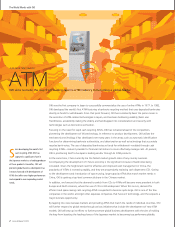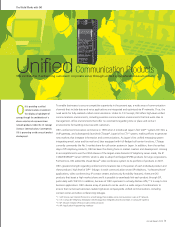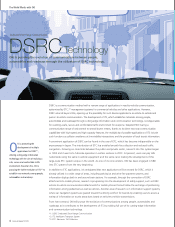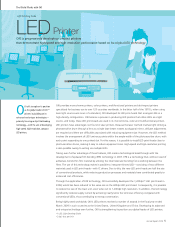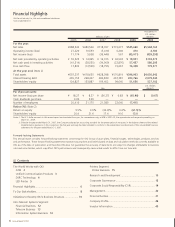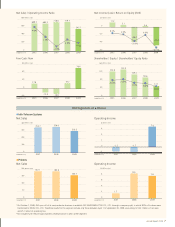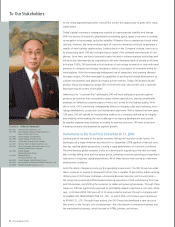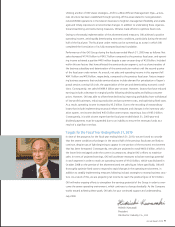Oki 2009 Annual Report Download - page 14
Download and view the complete annual report
Please find page 14 of the 2009 Oki annual report below. You can navigate through the pages in the report by either clicking on the pages listed below, or by using the keyword search tool below to find specific information within the annual report.
12 Annual Report 2009
GS21NAVI Next Generation Bank Branch
Terminal Solutions
As a core solution for realizing the ubiquitous
financial services advocated by OKI, GS21NAVI
helps to increase earnings and the level of customer
satisfaction for retail financial institutions by
bolstering sales functions and furthering
administrative efficiency and thoroughness. The
reduction of processing time, which in turn
generates more time for sales activities, is achieved
through the use of administrative navigation
functions that enable the visualization of sequential
administrative procedures and processing status
within sales branches. Moreover, utilizing functions
that analyze information compiled through the
execution of administrative procedures, it is possible
to improve the detection of risk during transactions
and gather data useful to third-party audits, thus
decreasing the burdens associated with
strengthening compliance measures.
GS21NAVI
Financial Business
Image Warehouse:
The Integrated Image-based Document Management System for Financial Institutions
OKI is actively taking steps both in Japan and overseas to expand its financial business, which is based
on three business pillars: mechatronics, systems and services.
The focal point of the mechatronics business is the ATM business, which boasts a high level of
performance in Japan, providing multifunctional and space-saving ATMs with increased security to
financial institutions and retail stores. In addition, the development and introduction of space-saving,
high-capacity ATMs that meet the needs of the Chinese market have led to the steady expansion of
sales. OKI is continuing to focus on developing markets in Japan, China and South Korea and aims to
further accelerate market development on a global scale in Europe and North America as it keeps an
eye on future collaboration with global vendors.
In the system business, OKI aims to expand its market share of the domestic retail financial sector
through GS21NAVI next generation bank branch terminal solutions. OKI will also provide systems that
enhance quality and realize efficiency by centralizing and integrating back office administrative work.
In the service business, OKI plans to expand the life cycle management (LCM) service business by taking
advantage of its operations management knowhow and linkage among Group companies, in addition to
retaining the No. 1 domestic share in the ATM monitoring service market. OKI also aims to create and
expand such ubiquitous financial services as the formulation of contact centers and mobile banking.
slip images processed and used by bank branch
terminals as well as of images stored in centralized
systems, including those used for currency
exchange and personal seals, making it possible to
collectively manage document images.
Consequently, document storage, which previously
could only be searched by operation, can now be
quickly categorized by customer, leading to
enhanced customer services and cost reductions.
The system also allows document management
based on a unified security policy and can easily
respond to changes in various social systems
related to the management of important
documents through the use of electronic
signatures and timestamps.
The Image Warehouse is an integrated
image-based document management system
designed to promote administrative efficiency and
strengthen compliance through the centralized
management of document images used by
financial institutions. Management systems for
document images stored at financial institutions
are traditionally decentralized by operation.
However, changes need to be made to all systems
that divide such functions by operation in response
to shifts in social systems, including compliance
with unified security standards, the e-Document
Law, internal controls and the J-SOX law, which
will be a costly process. Addressing this problem,
this system ensures the seamless linkage of bank


